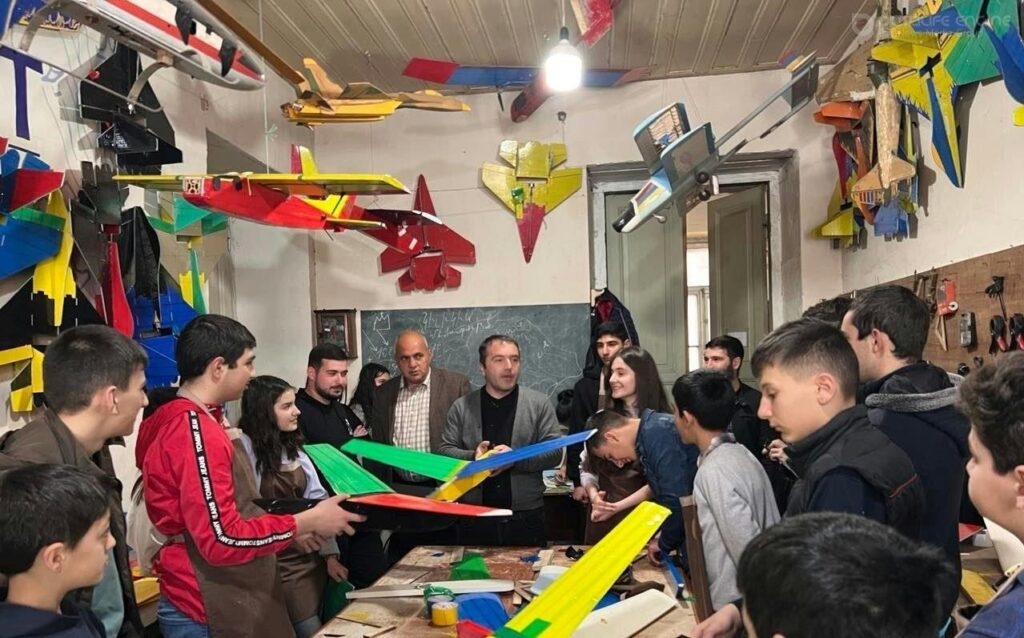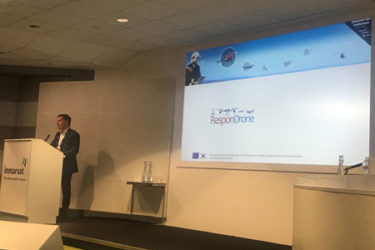ResponDrone partner AUA providing unique UAV-related educational platform for youth
May 19, 2022
ResponDrone project partner the American University of Armenia (AUA) has been actively integrating student researchers in the project and also providing UAV sessions (both development and practical usage) for high-school students to encourage young people to focus their talent on the tremendous humanitarian potential of drone applications, in various scenarios of disaster management.
AUA has been actively involving a group of undergraduate students from the Engineering Sciences (BSES), Computer Science (BSCS), and English and Communication (BAEC) programs in the project work for the past few years, researching various components of drone application, focusing on their relevance for use in environmental disasters.
As featured on the AUA Newsroom website, AUA student Shantal Adajian has been involved as a researcher in the project since December 2021. Shantal is genuinely passionate about research and will be pursuing Ph.D. studies in mechanical engineering at the University of California, Santa Barbara, this coming September.
The ResponDrone project provided her with a superb opportunity to engage in engineering and disaster management before progressing with her academic career. According to Shantal, “What interested me in the first place was how drones would be used in lieu of police cars and ambulances to move people to safer places”. Shantal also believes that her work on the ResponDrone project has improved her proficiency and efficiency as a researcher.
Harutyun Grigoryan, another AUA student involved in the project, who also works at Instigate Robotics, an Armenian IT company engaged in drone development and programming, has underscored ResponDrone’s people-centered approach. “Before introducing any type of new technology, it’s important to take into account the community at large,” he notes, asserting that ResponDrone does just that.
Harutyun also pointed out that Armenia hosts a UAV competition within the scope of the ResponDrone project in collaboration with Armenia’s MES (Ministry of Emergency Situations) and the Karen Vardanyan Educational Foundation. Professionals as well as novices participate in this event. The drones that successfully complete the assigned tasks are then entered into consideration by the MES for use in real-life situations.
Recently, the ResponDrone team held a workshop with MES to discuss the possibility of integrating the technology in disaster management. Shantal explains, “We presented our research findings to familiarize MES with what other countries are using in their own disaster response systems, including Macedonia, Netherlands, Bulgaria, France, and Greece that are among the countries involved in the ResponDrone project. Then we introduced the drone and explained how it works and in what situations it would be used.”
As part of the ResponDrone project, the team also runs UAV modeling and piloting training courses with students in high school drone clubs. “As a trainer, I provide students with both theoretical material and hands-on practical knowledge. I teach them how to operate UAVs. After practicing the drills, the students take a test and then start designing their own UAVs. After successful completion of the training program, the best students have the opportunity to take part in UAV competitions, such as Hawk,” remarks Harutyun.

The last demo/flight day was held in early April 2022. Out of a total number of 516 applicants some 57 were selected (26 in the 10-14 age group and 31 in the 15-18 age group). In order to facilitate a broader reach, all the training material (in Armenian) is available online, so that those young people not selected to take part in the activity can also benefit from the insights gained.
The project provides youth in Armenia with an excellent platform to learn about the use of drones, UAV development, and to gain practical experience working with them. Shantal’s passion for the inherent potential in the use of drones is apparent, “Drones are being used worldwide for multiple functions, they are amazing. They can reach places humans or other equipment can’t”. This is a clear manifestation of how the project is looking to the future and successfully motivating young people to invest their energy and drive in this important, developing field.





